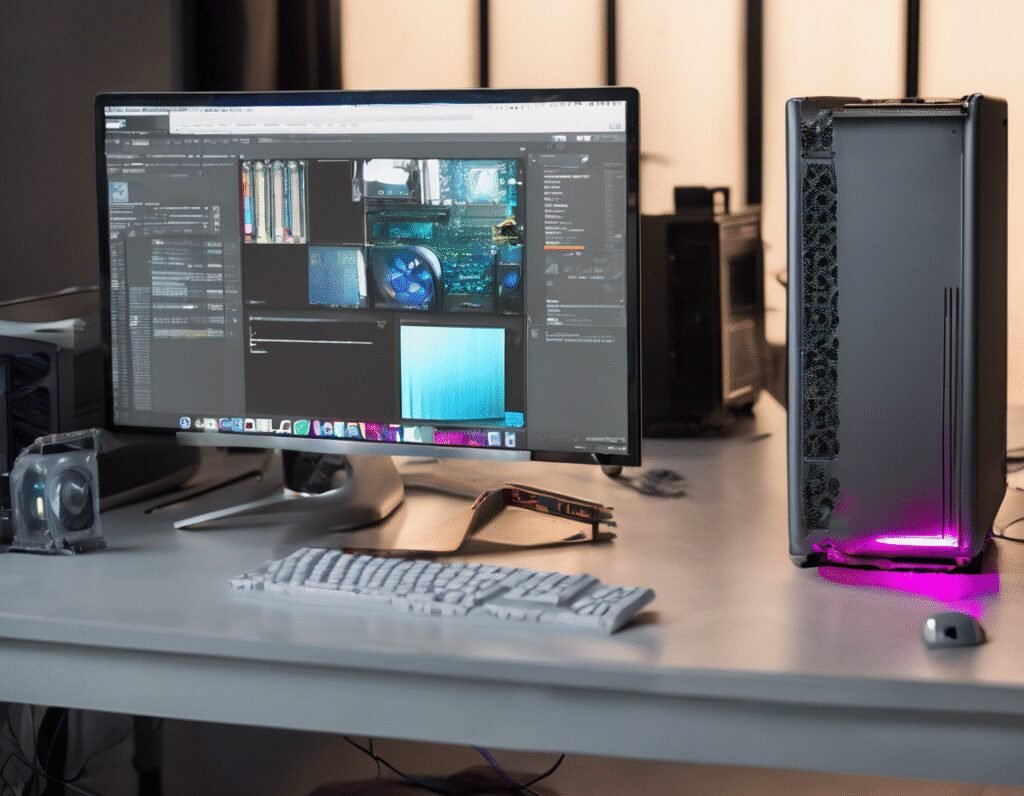Framework Desktop 2025 Review: A Powerful but Niche Machine
The most obvious question is why Framework, known for modular and repairable laptops, is venturing into desktops. After all, desktops are already modular by nature. The answer lies in AMD’s Ryzen AI Max, an APU combining CPU, GPU, and NPU in one package. Its performance claims were compelling enough for Framework to pivot and build a desktop around it.
The Ryzen AI Max offers up to 128GB RAM and 265GB/s memory bandwidth, making it a workstation-level chip in a consumer-friendly package. But this power comes at a cost—flexibility. Unlike traditional desktops, the APU is soldered to the mainboard, meaning upgrades or repairs require replacing nearly everything except the SSD, Wi-Fi module, and case.
Framework offers three configurations:
– Ryzen AI Max 385 with 32GB RAM and Radeon 8050S GPU
– Ryzen AI Max+ 395 with 64GB RAM and Radeon 8060S GPU
– Ryzen AI Max+ 395 with 128GB RAM and Radeon 8060S GPU
The desktop itself is a compact Mini-ITX build in a 4.5L case, with customizable front panels featuring colorful tiles. Two front-facing expansion slots allow for flexible I/O, while the rear includes USB-C, DisplayPort, USB-A, HDMI, Ethernet, and audio jacks.
Setup is straightforward. The DIY Edition requires minimal assembly—just slot in an SSD, attach the fan, and install an OS. Framework estimates 30-45 minutes, but it can be done in under 20.
Performance is where the Framework Desktop shines. While marketed to gamers and AI developers, its real strength lies in productivity. In testing, it breezed through demanding tasks like video editing, compressing a 39GB file to 6GB in just over an hour. AI workloads, such as running Google’s Gemma 3 27B model, were handled smoothly with room for heavier tasks.
Gaming performance was solid but not groundbreaking. The Radeon 8060S GPU is comparable to an RTX 4070 laptop GPU, handling titles like Fortnite and Hardspace: Shipbreaker with ease. However, gamers might prefer a system with a dedicated GPU for better performance.
Thermals and noise were surprisingly well-managed. Despite the high-power APU, the 120mm fan remained quiet under most loads, only becoming noticeable during intensive AI tasks or video exports.
Pricing starts at $1,099 for the base model, but adding essentials like an SSD, OS, and expansion cards brings it closer to $1,386. The mid-tier model (64GB RAM) adds $500, while the high-end (128GB RAM) pushes the total to around $2,286. Comparable pre-built systems, like Lenovo’s Legion Tower 5 or ASUS ROG G700, offer discrete GPUs and similar specs for the same price, making the Framework Desktop a tougher sell for general users.
Framework also sells the mainboard separately for $799, appealing to tinkerers or those building clusters for AI workloads.
The Verdict
The Framework Desktop is a powerful machine, but its appeal is niche. It excels in productivity and AI tasks, rivaling workstations like the Mac Studio, but falls short as a gaming PC. For general users, pre-built alternatives with dedicated GPUs may be more compelling. However, for developers and creatives who value its compact design and APU performance, it’s a strong contender—just not for everyone.


